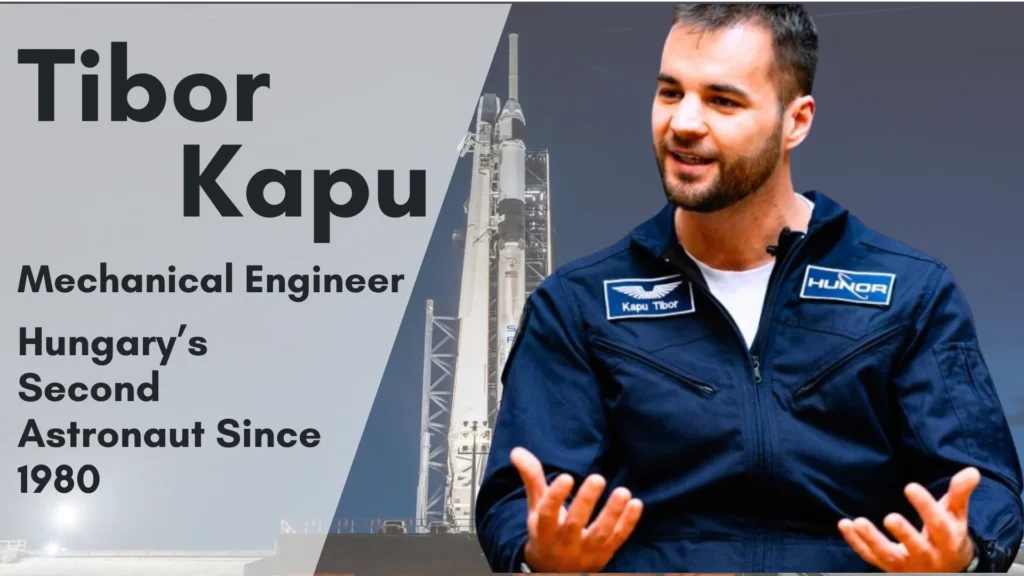Axiom-4 Mission: Introduction
A nation of 1.4 billion people waiting with bated breath as one of their own prepares to blast off into space, only for a small leak to put those dreams on hold. On June 11, 2025, a liquid oxygen (LOx) leak detected in SpaceX’s Falcon 9 rocket caused another delay for the Axiom-4 (Ax-4) mission, which was poised to mark Indian Air Force Group Captain Shubhanshu Shukla’s milestone journey to the International Space Station (ISS). This is the fourth postponement for a mission that’s a historic milestone for India, Poland, and Hungary, each sending astronauts to the ISS for the first time in over 40 years.
Why is this mission such a big deal? Forty-one years after Rakesh Sharma’s historic 1984 journey, it is an opportunity for India to resurrect its human spaceflight heritage. For Shubhanshu Shukla, it’s a personal victory and a moment of national pride. So, what’s behind this latest setback, and what’s at stake for this bold international project? Let’s unpack the Axiom-4 mission delay, meet its crew, explore its importance, and look at what’s next.
Why Was the Axiom-4 Mission Delayed?
A Liquid Oxygen Leak Stops Falcon 9
The Axiom-4 mission was scheduled to launch on June 11, 2025, at 5:30 PM IST from NASA’s Kennedy Space Center in Florida. But SpaceX called it off at the last minute after finding a liquid oxygen leak during routine checks of the Falcon 9 rocket after a static fire test. The leak, spotted in the propulsion bay during a seven-second hot test, led SpaceX, NASA, and the Indian Space Research Organisation (ISRO) to put safety first and delay the launch.
SpaceX shared on X: “Standing down from tomorrow’s Falcon 9 launch of Ax-4 to the @Space_Station to allow additional time for SpaceX teams to repair the LOx leak identified during post static fire booster inspections. Once complete – and pending Range availability – we will share a new launch date.”
ISRO Chairman V. Narayanan backed this decision, explaining that after talks with Axiom Space and SpaceX experts, they agreed to fix the leak and run validation tests before moving forward. This careful approach highlights just how complex human spaceflight is and the absolute priority of keeping astronauts safe.
A Series of Setbacks
This isn’t Axiom-4’s first roadblock. The mission was originally set for May 29, 2025, but was pushed to June 8 due to logistical issues, including problems with parachute bags and a wire harness, as Sarah Walker, SpaceX’s Director of Dragon Mission Management, mentioned in a May 20 press conference. Further delays moved the launch to June 10 and then June 11, mainly because of bad weather, like high winds and a 45% chance of rain. This latest technical glitch adds another hurdle to an already tricky schedule.
Who Are the Axiom-4 Crew Members?
The Axiom-4 mission brings together Axiom Space, NASA, SpaceX, and ISRO, uniting a diverse crew from four countries. Here’s who’s on board:
Peggy Whitson: The Record-Setting Leader

At the helm is Peggy Whitson, a former NASA astronaut and Axiom Space’s Director of Human Spaceflight. With 675 days in space from three long missions and the Axiom-2 mission, Whitson has spent more time in space than any other American or female astronaut. She’s also the first woman to command the ISS twice, making her a pioneer in space exploration. Her expertise gives the Ax-4 crew a steady hand.
Shubhanshu Shukla: India’s Rising Star

Group Captain Shubhanshu Shukla, a 39-year-old Indian Air Force test pilot, is poised to be the first Indian to visit the ISS and only the second Indian in space since Rakesh Sharma in 1984. Hailing from Lucknow (an alumni of prestigious City Montessori School), Group Captain Shukla brings with him over 2,000 flying hours across a range of combat aircraft, including the Jaguar, MiG-21, and Su-30 MKI. Chosen for ISRO’s Gaganyaan mission, India’s first human spaceflight program, Shukla’s ISS trip is a key step toward India’s big space goals, like building a space station by 2035 and landing on the moon by 2040.
Shukla says he carries “the hopes and dreams of a billion hearts.” His mission isn’t just about science—it’s about inspiring young Indians to reach for the stars. He plans to bring a surprise gift for Rakesh Sharma into space, a nod to India’s space heritage.
Sławosz Uznański-Wiśniewski: Poland’s Science Expert

Sławosz Uznański-Wiśniewski, a scientist and engineer from Poland, brings know-how from his work at CERN in Geneva. As Poland’s second astronaut since 1978, his role is a big moment for the country’s space program. He’ll run advanced experiments, drawing on his skills in reliability engineering.
Tibor Kapu: Hungary’s New Talent

Tibor Kapu, a mechanical engineer, is Hungary’s second astronaut since 1980. Picked through the Hungarian to Orbit (HUNOR) program from 247 candidates, Kapu’s role as a mission specialist shows Hungary’s renewed focus on space exploration.
Why Is Axiom-4 a Game-Changer for India, Poland, and Hungary?
A Milestone for Global Teamwork

Axiom-4 is more than a space trip—it’s proof that countries can work together to explore the cosmos. It’s the first time India, Poland, and Hungary have sent astronauts to the International Space Station (ISS) and their first government-sponsored human spaceflight in more over 40 years. This partnership, supported by NASA, Axiom Space, SpaceX, and ISRO, shows how private companies and governments can team up to break new ground in science and innovation.
For India, the trip fulfills a pledge made by Indian Prime Minister Narendra Modi and US President Donald Trump to send an ISRO astronaut to the International Space Station. Costing ISRO 5 billion rupees ($59 million), it’s a critical training opportunity for India’s Gaganyaan mission, planned for 2026.
Science Goals and Experiments
The Ax-4 crew will work on 60 experiments, including seven from ISRO, during their 14-day stay aboard the ISS. These focus on microgravity research, covering areas like:
- Cognitive Impacts: How computer screens affect the brain in microgravity.
- Microalgae and Cyanobacteria: Comparing their growth in space versus Earth.
- Skeletal Muscle Dysfunction: Exploring treatments for muscle health in space.
- Crop Seed Resilience: Testing how seeds grow in microgravity for future space farming.
NASA will add five studies through its human research program, boosting the mission’s scientific value. These experiments aim to deepen our knowledge of how living things function in space, setting the stage for longer missions.
What Caused the Previous Delays?
The Axiom-4 mission has hit several bumps, each showing how tough space travel can be:
- May 29 to June 8: The first launch date was delayed to fix issues like faulty parachute bags and a wire harness replacement.
- June 8 to June 10: Changes to the ISS schedule and spacecraft prep caused another delay.
- June 10 to June 11: Bad weather, including high winds and a 45% chance of rain, pushed the launch back a day.
- June 11 Postponement: The liquid oxygen leak found during a hot test required more repairs and testing.
These delays reflect the strict safety standards of SpaceX, NASA, and ISRO. As Sarah Walker pointed out, even small problems like moisture in parachute bags can be serious, demanding careful fixes.
What Happens Next?
Fixing the Falcon 9
SpaceX is working hard to repair the liquid oxygen leak, with teams running tests to make sure the Falcon 9 is ready to fly. The new launch date depends on finishing these repairs and getting a clear slot at Kennedy Space Center. SpaceX and NASA will share updates once a new schedule is set.

Getting Ready for Launch
The entire launch day protocol has been rehearsed by the Ax-4 crew, who are currently under quarantine to maintain their health. With Peggy Whitson’s leadership, the mission is well-prepared to succeed once the technical issues are sorted out.
Sparking Inspiration
For Shubhanshu Shukla, this mission is personal. “It’s an amazing journey, but the best is yet to come,” he said, aiming to fuel curiosity among Indian kids. His sister, Shuchi Mishra, told the BBC the family feels “privileged and proud” to see Shubhanshu represent India globally.
Why Should You Care About Axiom-4?
Axiom-4 is more than a technical project—it’s a tale of human dreams, global teamwork, and scientific breakthroughs. For India, it’s a shot at reclaiming its spot in human spaceflight, inspiring a nation that’s reaching for the stars. For Poland and Hungary, it’s a historic comeback to space exploration. And for the world, it’s a reminder that working together can conquer even tough challenges like a rocket leak.
While we wait for the new launch date, Axiom-4 remains a symbol of hope and progress Might Shubhanshu Shukla’s voyage serve as motivation for upcoming space travelers? Time will tell, but one thing’s clear: this mission is a big step toward a future where space is open to everyone.
Share the Journey
The Axiom-4 delay may have paused the countdown, but the excitement hasn’t faded. Share this story with friends, family, or anyone who loves space. Keep up with SpaceX, NASA, and ISRO on X for the latest on the rescheduled launch. If Shubhanshu Shukla’s story inspires you, check out India’s Gaganyaan mission or Axiom Space’s plans for a private space station.
Suggested Featured Image: A striking image of the SpaceX Falcon 9 rocket on the launch pad at Kennedy Space Center, with the Axiom-4 crew in spacesuits upfront, representing unity and ambition.


